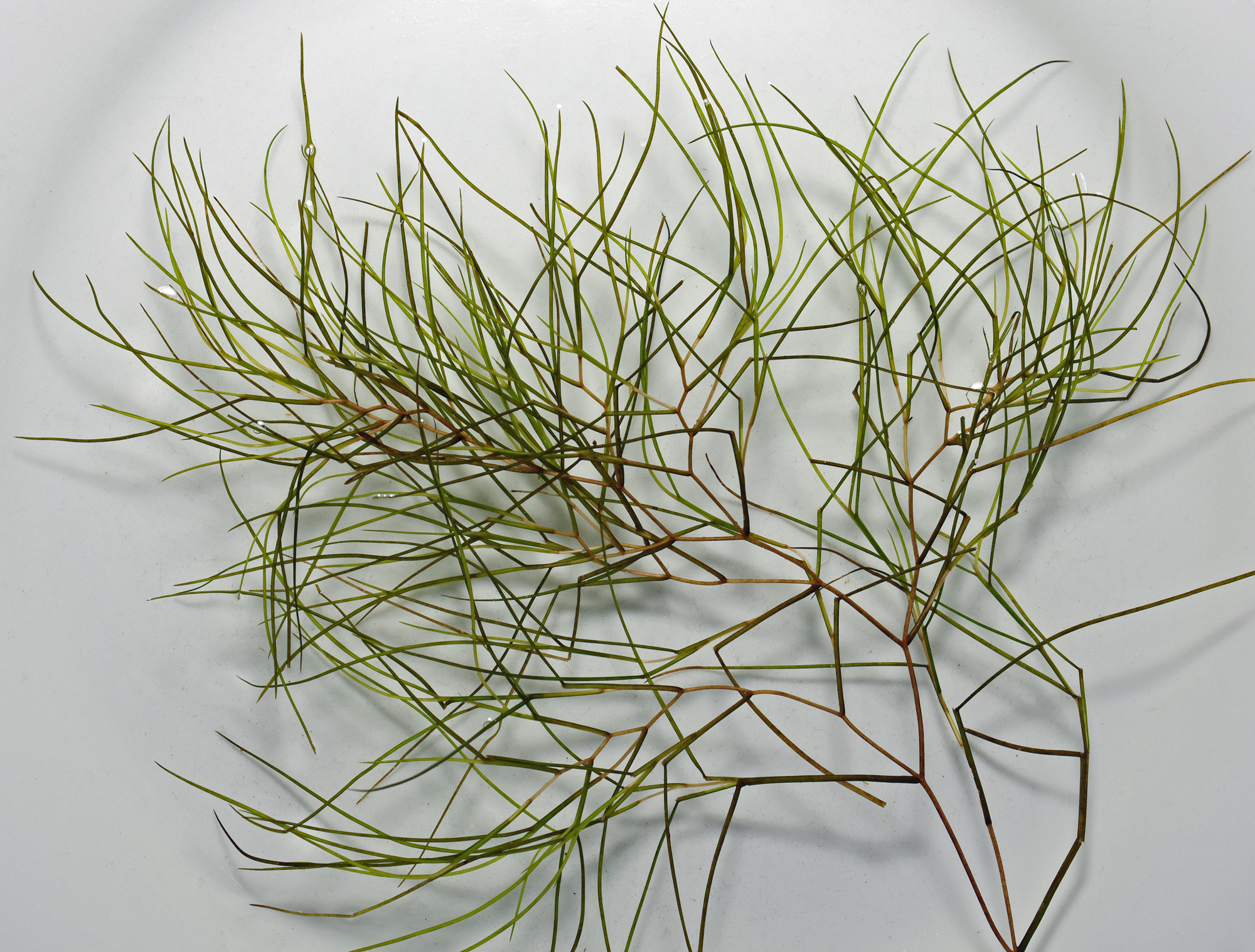
Ecological Importance
Sago pondweed is an extremely important aquatic plant in lakes and ponds because of its nutritional value as a food source for birds, including waterfowl (especially diving ducks and swans), marsh birds, and shorebirds. The tubers and seeds are very nutritious, but leaves, stems and roots are also eaten. Sago also provides food for amphibians, reptiles, fish, and mammals. Sago beds provide habitat for a large number of invertebrates, which in turn are an important food source for young waterfowl.
Because its long rhizomes and runners provide a strong anchorage in the substrate, sago pondweed helps reduce erosion. The leaves provide shelter, support, and an increased oxygen supply for many aquatic animals. Sago also acts as a nutrient buffer by using dissolved nitrogen and phosphorus for growth. This helps reduce algae blooms by making the nutrients unavailable for the algae.
Problems
This plant can create dense stands that clog irrigation canals and produce major problems for water flow and access, but it is very important in natural habitats as a waterfowl food source. Control should be used when the sago plant population is creating significant problems.
Plant Description
Sago pondweed grows from thickly matted rhizomes. All leaves are submerged below the water line and alternately arranged on the steam.
Sago Pondweed leaves are highly branched, stiff, narrow (about 1/16" wide) and thread-like (2" -12" or more in length). Resembling pine needles, each leaf ends in a sharp point. Spreading leaves resemble a fan with an overall bushy appearance. Nutlets (approx. 18" - 14" long by 1/10" to 1/8" wide) appear like beads on a string. Tiny green flower appears on a spike along with nutlets above the water surface.
Hints to Identify:
Sago Pondweed (Potamogeton pectinatus) has very fine slender leaves. Multiple long thin leaves appear bushy beneath the water. When removed from the water the plant will relax with little or no rigidity.

Common Application Questions
Q. When is the best time to treat?
A. Once water temperatures are around sixty degrees or warmer and the plants are viable.
Q. How often do I need to treat?
A. Generally, there is little regrowth within the same season. Note that other aquatic species like the Naiad family grow later in the season that may require a mid to later season treatment to achieve season long clear water.
Q. How long before I see results?
A. Generally within two weeks things will be cleared up.
| Homeowner Treatment Options |
| Aquathol K |
| Aquathol Super K |
| Hydrothol® Granular |
| Sonar AS |
| Sonar RTU |
| *Aquatic Biologists recommends implementing preventative management techniques and physical removal prior to, or in conjunction with treatment. |
